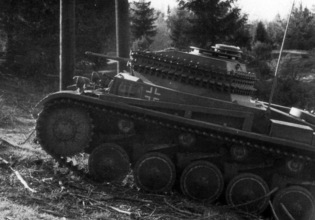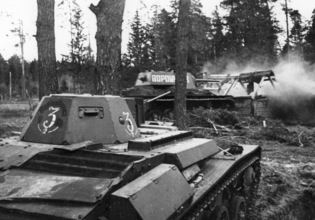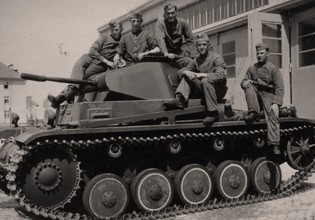A notable event in the history of Soviet tank building took place in December of 1942. The SU-35, the first Soviet medium SPG, was put into production. There was the SG-122 that predated it, but it was a conversion of the German StuG III. The SU-35 (SU-122), however, was an entirely domestic design. Due to the urgency, the SU-35 was put into production without a second prototype. The SPG went into production straight from the drawing board. Nevertheless, the issue of modernization was raised at the highest levels in January of 1943. The result of the ensuing work was the SU-122M. However, this assault SPG's fate was not as fortunate: it never made it to production.
Fourth coming of the U-11
As strange as it sounds, the GABTU considered the armameent as one of the drawbacks of the SU-35. The 122 mm M-30 howitzer was massive and took up a lot of space. A heavy and large mantlet had to be introduced to cover the recoil mechanisms. The alternative was the U-11 tank howitzer, designed in November-December of 1941 for the KV-9 tank.
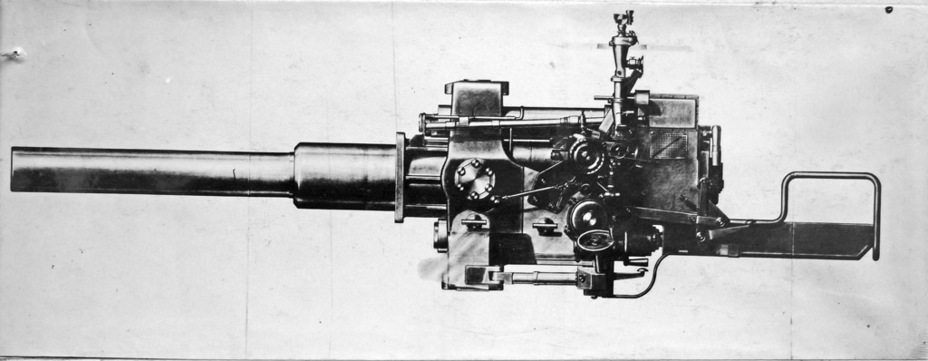
The tank was never put into production, and the idea of a howitzer-armed T-34 didn't get off the ground either. However, the U-11 itself initially got a green light, and UZTM produced 10 howitzers. The U-11 looked promising as armament for SPGs. Factory #592's design bureau came up with the SG-122U, and factory #8's design bureau used it in the ZIK-10.
Neither vehicle got off the drawing board, but the GABTU (renamed to GBTU after December of 1942) did not give up on using the U-11 for something. Aside from the desire to «find a home» for it, there were better reasons to use this howitzer specifically. It was more compact and lighter than the M-30, in part due to the mantlet. However, the GAU resisted the return of the U-11, due to the fact that the gun was not in mass production. The last discussion on this subject was held on January 8th, 1943.
The GAU managed to talk down the tankers, arguing that the SU-35 passed trials successfully. This was true, but with one caveat. The conditions of the crew did improve, but only when compared to the prototype U-35. A number of drawbacks were discovered in the SU-35 pilot batch. The primary issue was with crew conditions. The visibility was insufficient, the crew worked in cramped conditions, and the commander was overloaded with duties. There were also complaints about the gun. It's not surprising that the GAU began looking at modernization towards the end of January. Bad working conditions meant that the combat effectiveness of the vehicle, especially the rate of fire, decreased.
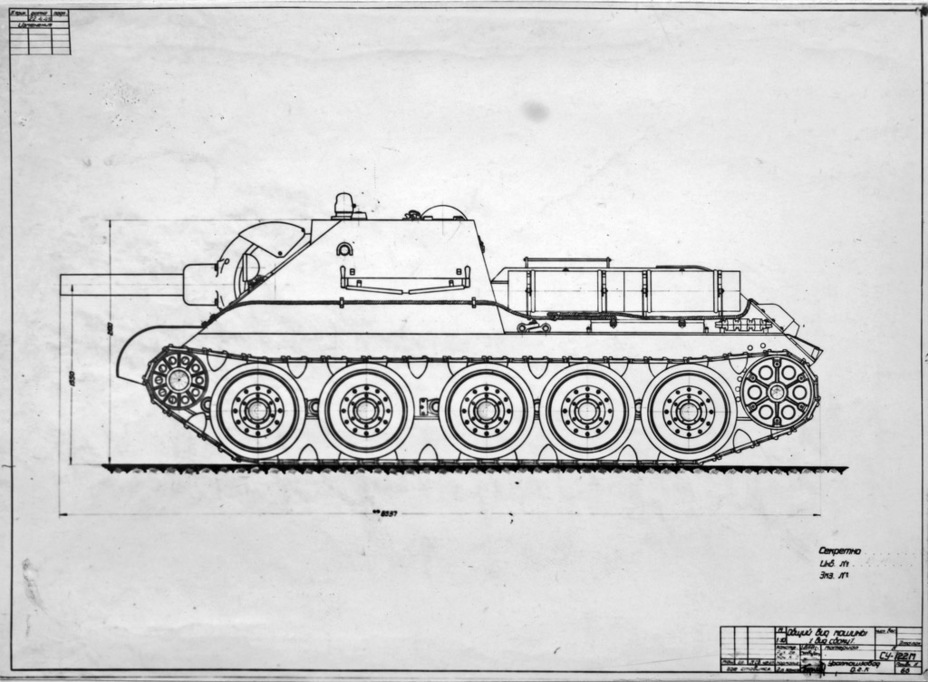
A meeting was held at UZTM on January 21st, 1943. The chairman was the factory's chief engineer, M.G. Umnyagin. The topic of the meeting was the improvement of the SU-35's design. The GAU was represented by P.F. Solomonov, and the UZTM design bureau by N.D. Verner, the chief designer, and N.V. Kurin, the lead designer on the project. A decision was made to widen the fighting compartment to span the full width of the vehicle. The commander and breech operator's seats were changed, and a horizontal ammunition rack was introduced. The gun mount was radically altered, the mantlet was changed, the gun itself was mounted in a frame, and a telescopic sight was added.
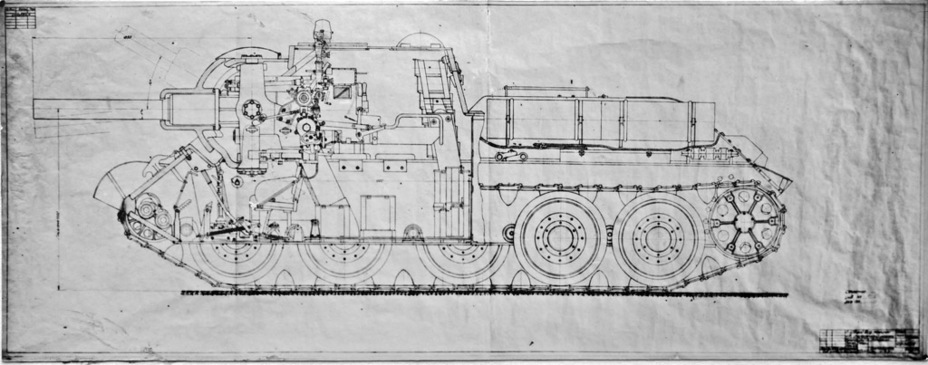
The use of the U-11 was not yet mentioned, but it was clear that the rejected gun would return, but in a modernized form. In the time that passed, the design of tank guns moved to factory #9, the chief designer at which was F.F. Petrov. A.N. Bulashev, a man with plenty of experience with SPG guns, began directing the work on a new gun, indexed D-11.
The reworked D-11 was reminiscent of the system designed for the ZIK-10. Compared to the SPG version of the U-11, the new system lost its tray, and a recoil guard and telescopic sight were added. The design was also simplified. These changes were made in tight cooperation with the UZTM design bureau, which was already working on a modernization of the SU-35. As with the U-35, Kurin was the lead engineer.
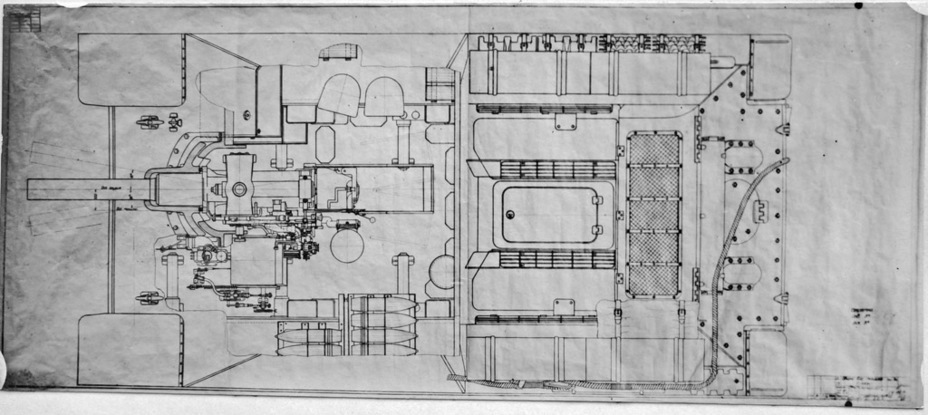
The D-11 and modernized SU-35 were reviewed at a technical meeting in Sverdlovsk on February 24th, 1943. Some solutions for the new SPG were taken from the SG-2, most notably the ammunition rack placement. The wider fighting compartment resolved a number of issues. Instead of a half-hatch, useful only for observation, a full T-34 hatch now fit in the front. The larger volume allowed for a more comfortable placement of the crew. Another improvement was that the center of mass shifted back by 300 mm, which reduced the load on the front road wheels.
Overall, the new SU-35 was deemed successful. The same could be said for the D-11. Thanks to various changes, the mass of the gun and its mantlet was 100-120 kg less than the M-30. Another important fact was that it took up much less space. The mount was also greatly simplified. The lack of a pedestal meant that it could be attached directly to the upper front plate. This was a big step forward for ease of removal and installation. The D-11 was often called U-11 in correspondence, but the two guns were different.
The estimated mass of the U-35M was 31 tons. The increased mass was due to a wider fighting compartment.
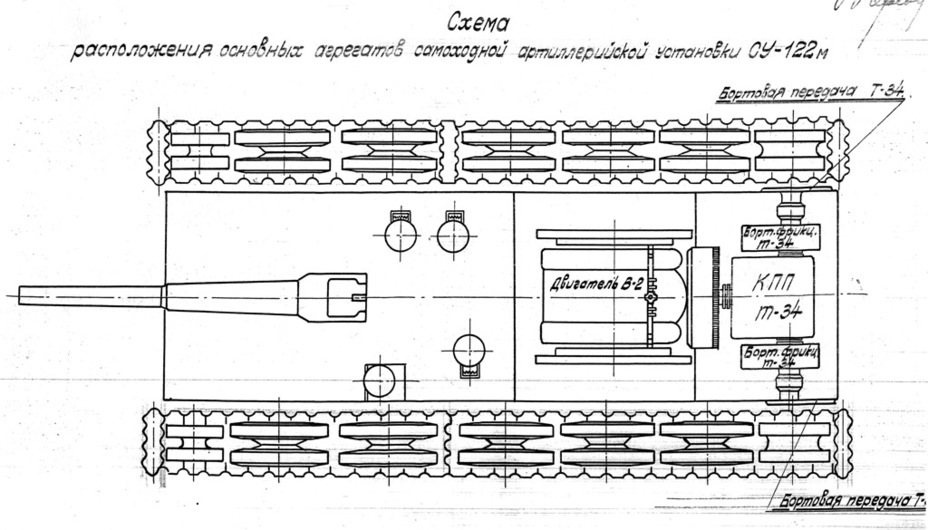
An experimental prototype of the D-11 was expected by April 1st, and a prototype of the SPG, indexed U-35M, was expected by April 10th. In practice, only factory #9 managed to meet their deadlines. Their prototype D-11 was ready by March 28th, and fired 26 shots at the factory's shooting range.
As for the U-35M, work dragged on. When the SU-35 was renamed to SU-122 on April 3rd, the U-35M's index changed too. Now it was called SU-122M.
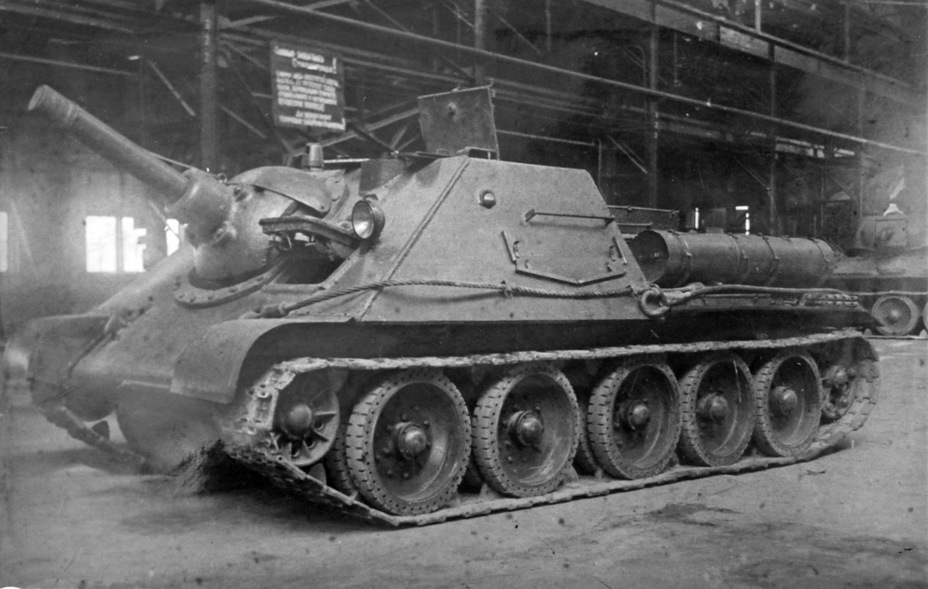
Due to a large number of production issues with the SU-122, UZTM had no time for a prototype. Factory documentation was only ready by April 3rd, and the technical description by April 10th. As for production in metal, it was temporarily postponed. Only 75 SU-122s were delivered in April instead of 100, and the factory was fighting with a number of defects. It's not surprising that the deadline was moved, first to April 20th, then the 25th. The SU-122M prototype was completed only towards the end of April, and the first factory trials took place on May 17th. The vehicle drove for 100 km and fired 50 shots.
Solomonov, a participant in the trials, took note not only of the vehicle's advantages, but also its drawbacks. The mass increased to 31.5 tons. The visibility was insufficient. The D-11 had its drawbacks as well. The screw breech rested on the commander's knees at an elevation angle of over 5 degrees. The gun shield also had design flaws.
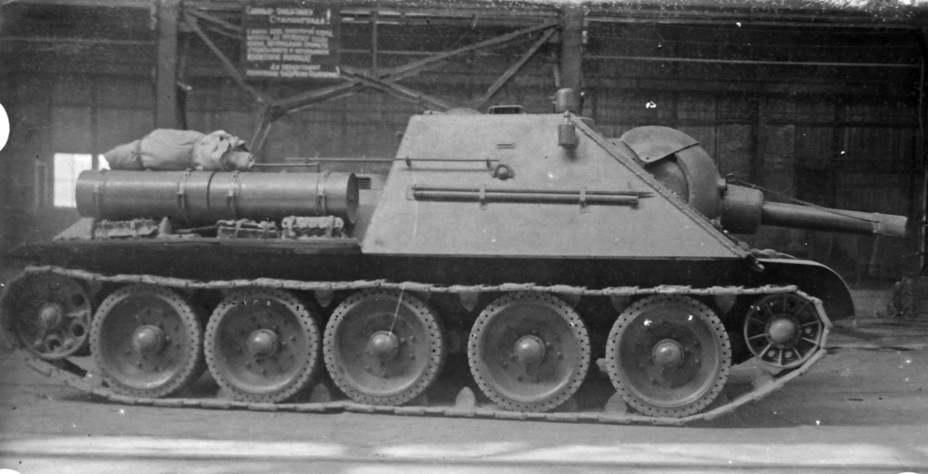
A state program for trials of the SU-122M was approved on May 27th. They began on June 13th and lasted until July 13th at the Ural proving grounds. Mobility trials were made more difficult by rain, which turned roads to mud. The vehicle passed the trials. Any drawbacks revealed were identical on the T-34. However, there was an increased load on the second and third pairs of road wheels. Gunnery trials went well, except for firing on the move. To be fair, the SU-122M was never designed for that task. Not everything was perfect with aiming the gun. As Solomonov noted, the breech clipped the commander's knees at certain angles. As for notes about visibility, it was still better than on the SU-122.
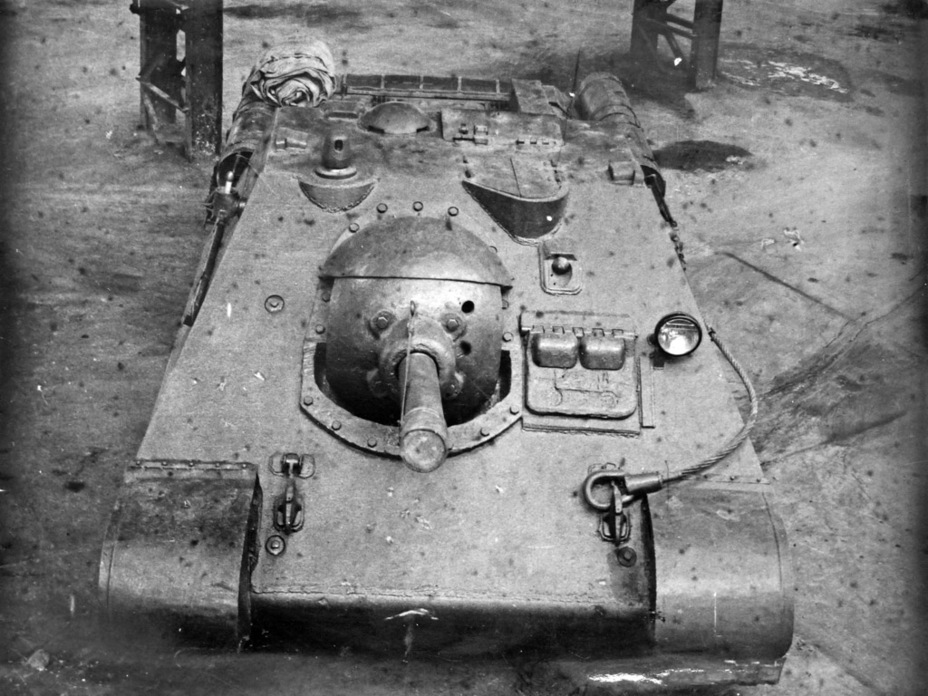
Despite some complaints, the SU-122M passed trials. The commission approved the mass production of the modernized SPG and the D-11. The issue was that the situation with medium SPGs had changed. As a result, the SU-122M was no longer needed, and a whole new vehicle went on trial in late July.
In the SU-85's shadow
The decline of the medium assault SPG began in the spring of 1943. Two German Tiger tanks were captured on January 18th, 1943. Trials in April of 1943 showed that the 85 mm 52-K gun was guaranteed to be able to defeat them. It's not surprising that Stalin signed GKO decree #3289 titled ''On improvement of armament of tanks and SPGs'' on May 5th, 1943. The SU-122 received a ''85 mm gun with AA gun ballistics''. The experimental SPG was expected by July 1st, 1943.
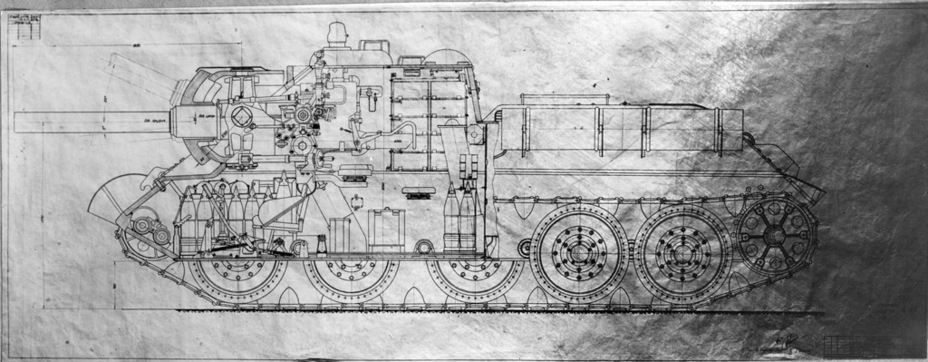
Work on 85 mm guns for tanks and SPGs began at factory #9. The SPG variant was called D-5, and the tank variant was called D-7. In late May, they were renamed D-5S-85 and D-5T-85 respectively. At the same time, a decision was made to develop a weapon on the same base, with the ballistics of the M-30 howitzer.The self propelled version was called D-6 and the tank version was called D-8, later renamed to D-5S-122 and D-5T-122. The latter decision was made by the Artillery Committee of the GAU. Largely, these systems were evolutions of the D-11 and its tank version, the D-12. The biggest difference was that the systems were duplexes: the 85 mm barrel could be swapped out for a 122 mm one with minimal changes. This kind of unification allowed for two SPGs with minimal efforts.
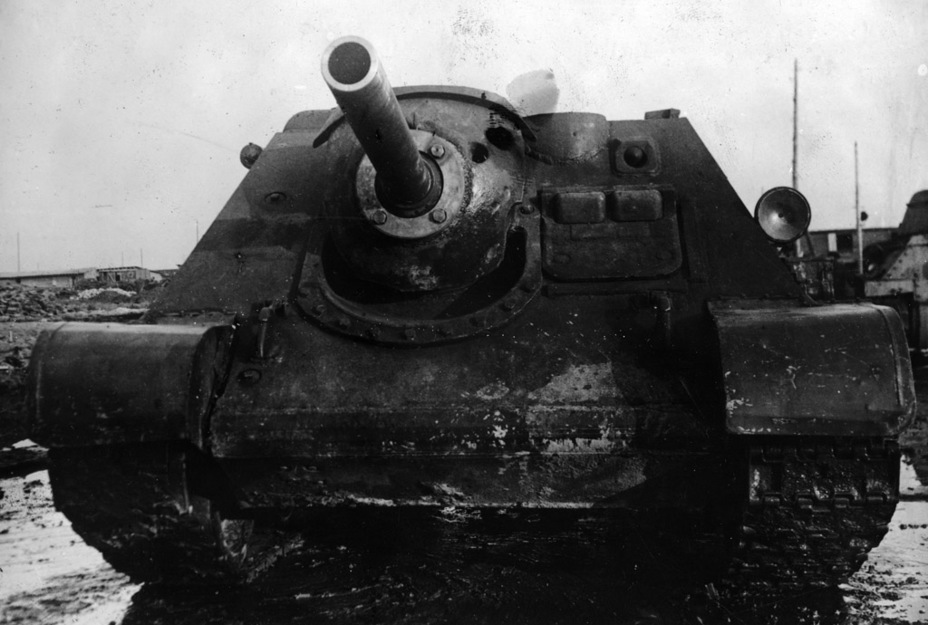
Work on the D-5 family of guns began in mid-May of 1943. By May 22nd, working blueprints were sent to the production plant. June 15th was set as the production deadline. As mentioned before, the D-5S-122 was a further evolution of the D-11. Factory #9 took the drawbacks of the initial design into account. The gun mount was more compact, the recoil guard became shorter, and the recoil length was reduced to 430 mm. The gun mantlet was simplified, and its thickness was increased. A number of drawbacks of the gun shield were removed, and a simpler cap was added to replace the complex spherical one.
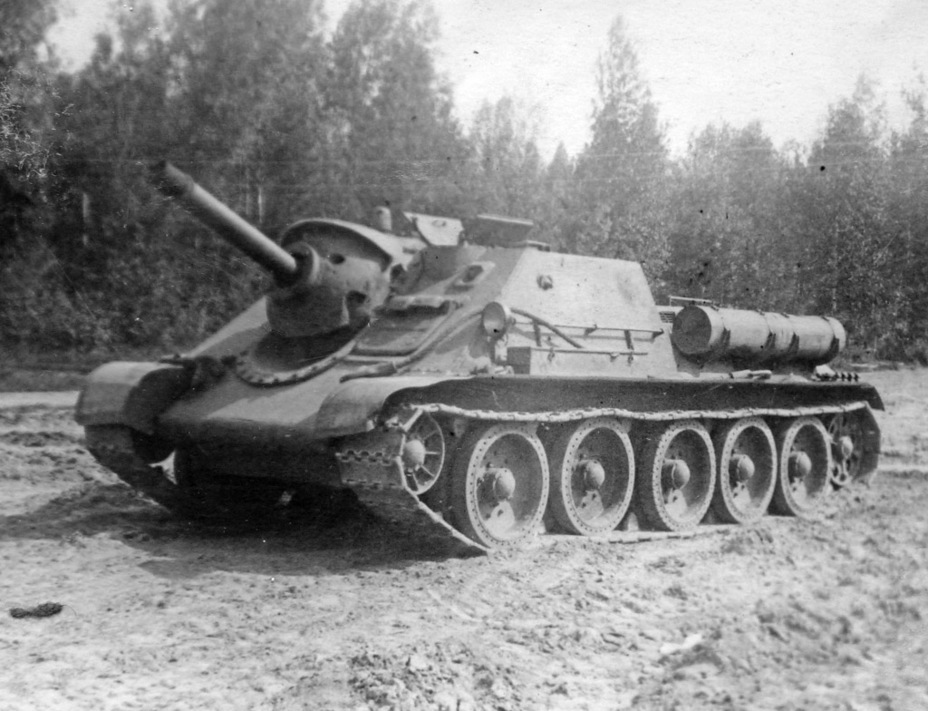
Even though GKO decree #3289 specified the SU-122 as the SU-85's chassis, the result was somewhat different. The sight dome was moved to the front right part of the roof and equipped with a periscopic observation device, making a sort of commander's cupola. Like on the SG-2, the top hatch was composed of two pieces. The more compact gun finally allowed the installation of a proper hatch for the driver. The usable volume of the fighting compartment increased without enlarging the casemate. In other words, the improvements of the SU-122M were achieved in a simpler way. The reworked vehicle was referred to as D-5-SU-122, but it was called SU-122-III in internal factory documentation.
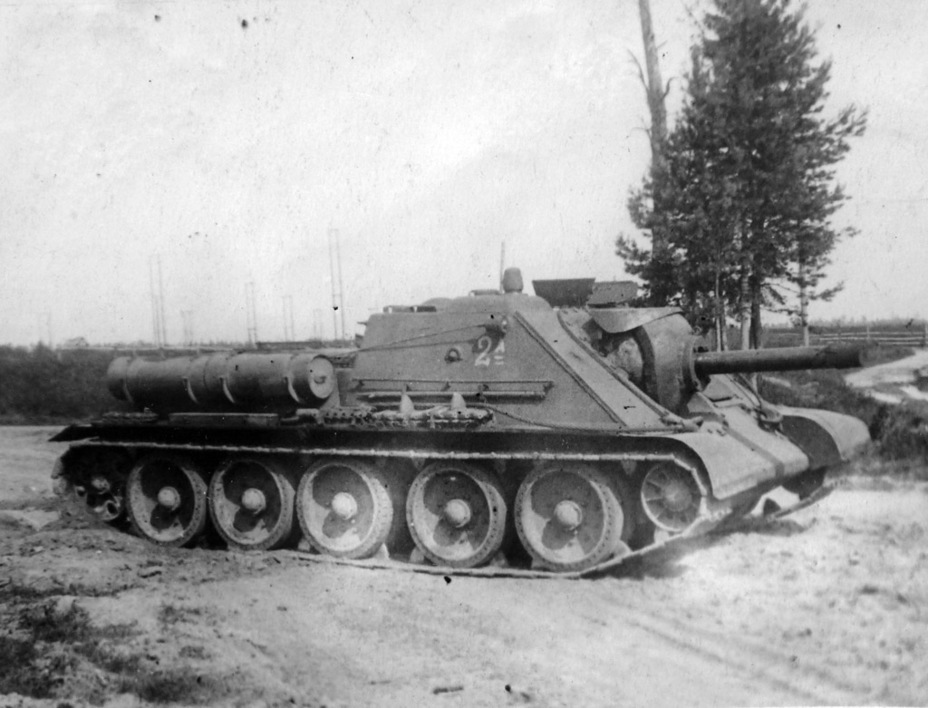
The factory trials program was signed on July 6th, 1943. The vehicle was also completed in July. The SU-122-III entered trials on July 25th, along with three SU-85 prototypes. The chassis and fighting compartments of all vehicles were almost identical. This made it easier to produce whichever vehicle won. The SU-122-III was tested outside of the contest, since the SU-85 was prioritized.
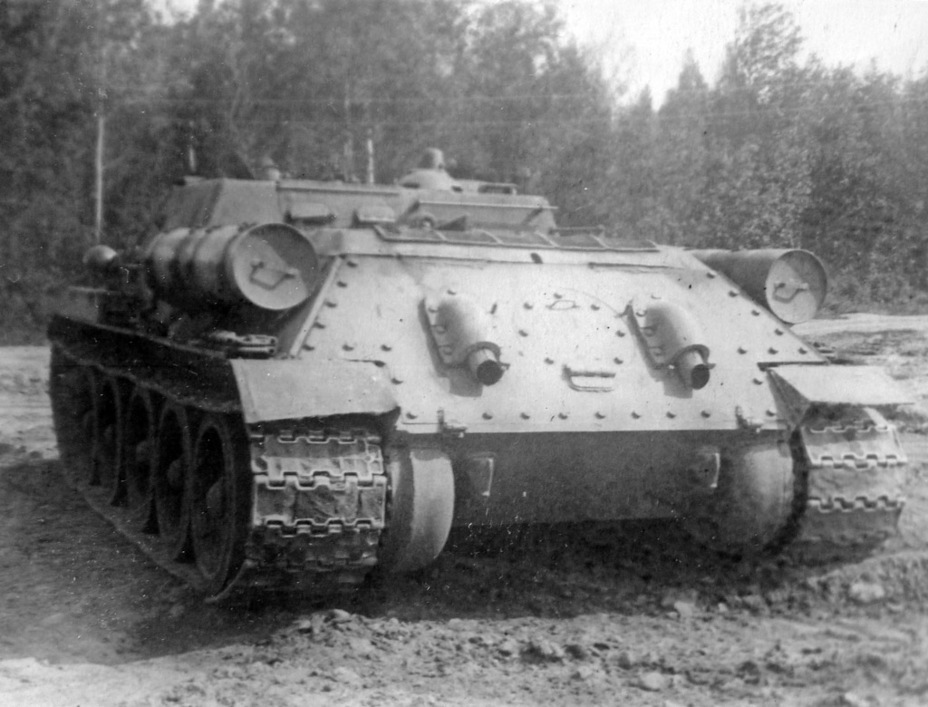
The methodology of testing all vehicles was the same. They drove for 373 km on a cobblestone and gravel highway and 112 km on dirt roads. The fuel expenditure was 187 and 220 L per 100 km respectively. The biggest defect encountered was damage of the road wheel rims. It's worth mentioning that the SU-122-III was the heaviest vehicle on trial, weighing in at 30 tons.
Gunnery trials were an issue. Imperfections in the recoil mechanism design resulted in a number of short-strokes and recoils close to maximum length. The recoil mechanism issues led to deformation of gun mount components. The commission decided to remove the SU-122-III from trials. The uncomfortable commander's station, poor ammunition rack design, and a number of other drawbacks were mentioned. However, the commission made note of the well designed brass catcher.
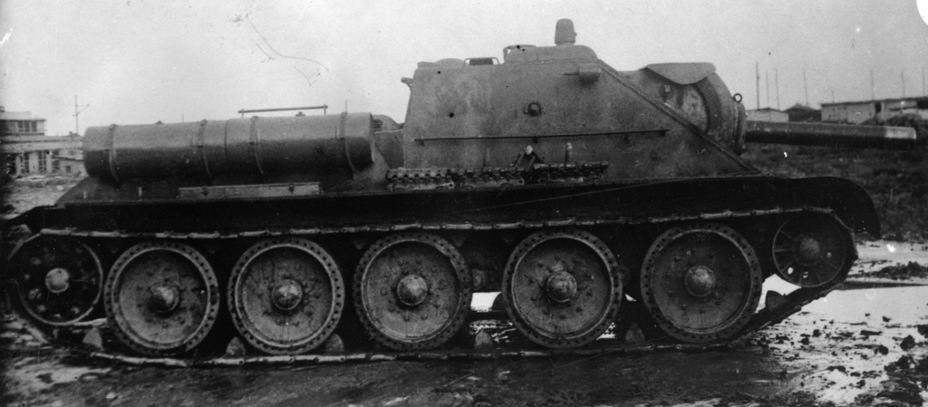
After the trials, factory #9 was offered to improve the SPG. There was a long list of improvements after the issues with recoil mechanisms. For instance, the commission wanted a sliding breech instead of a screw one.
The SU-85-II with a D-5S-85 gun performed the best. It went into production as the SU-85. As for the SU-122-II, work on medium assault SPGs ended in August. The priorities shifted towards tank destroyers to combat the German «zoo».
A minute late and a dollar short
The story of modernizations of the SU-122 would be incomplete without mentioning one more SPG. This vehicle did not only stop at the drawing board, but became lost in the sands of time, remaining an unknown page of history until today. This design is the S-41. The weapon is known more as a tank gun, but the TsAKB (Central Artillery Design Bureau) also designed an SPG variant.
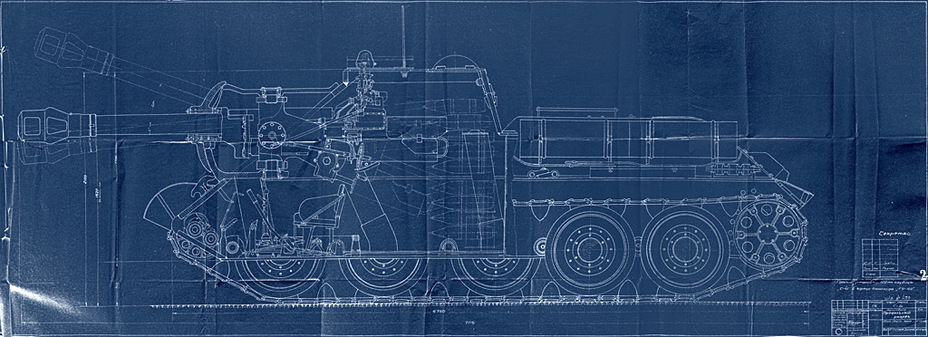
The history of the S-41 began in May of 1943. As mentioned above, GKO decree #3289 was published on May 5th, which set factory #9 to develop the D-5 family of guns. At the same time, TsAKB began working on its own set of 85 mm guns: S-18 and S-31. The S-18 was a duplex, like the D-5 and D-6. TsAKB designed a 122 mm variant with ballistics of the M-30 howitzer. This system was indexed S-41. Grabin himself directed the design work.
As many existing components as possible were used to simplify production. The cradle was taken from the ZIS-5, the breech was taken from the S-3 (future BS-3). A two-chamber muzzle brake was used to reduce recoil. The addition of a muzzle brake, which kicked up a column of dust when firing, could hardly be called an advantage. On the other hand, the sliding breech was an improvement over the D-11 and D-5S-122. The gun's mount and mantlet were unified with the S-18. Aside from the self propelled version, the S-41 was designed for installation into modified KV-1S and IS-1 (Object 233) turrets.
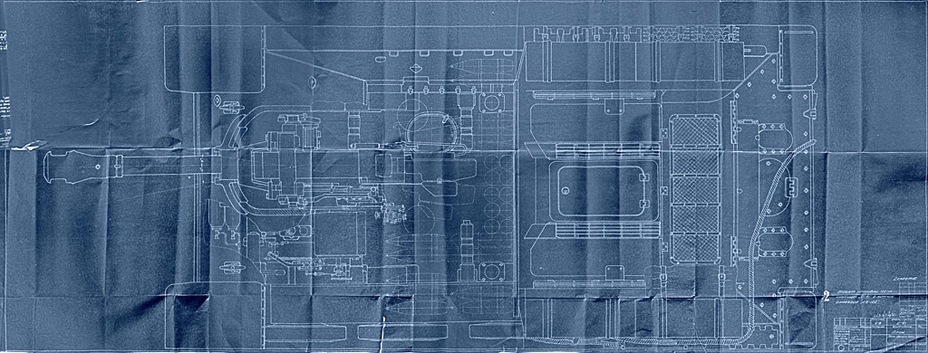
The S-41 was sent to the GAU Artillery Committee in late May of 1943. Since 85 mm SPG and tank guns had the highest priority, the 122 mm gun was shelved for the time being. The S-41 was reviewed again in early August of 1943. By then, the TsAKB had already built a tank version of the howitzer. The S-41 was kept as a backup plan, since, even though the SU-122 was being removed from production, the vehicles remained in service. A proposal was made to install the S-41 into the SU-85-IV instead of the S-18. Due to the degree of unification, it would not have taken much time.
Here, work on the SPG variant of the S-14 stopped. According to correspondence for September of 1943, this kind of work required the personal approval of Lavrentiy Beria. This approval was eventually obtained, as evidenced by the appearance of S-41 trials in the schedule for October-November of 1943, but the interest towards tank and SPG howitzers waned. The conversion never took place, and the correspondence and documentation for the S-41 collected dust in archives.
Translated by Peter Samsonov. Read more interesting tank articles on his blog Tank Archives.
Sources:
- Central Archives of the Russian Ministry of Defence;
- Russian State Archive of Socio-Political History;
- Russian State Archive of Economics.

